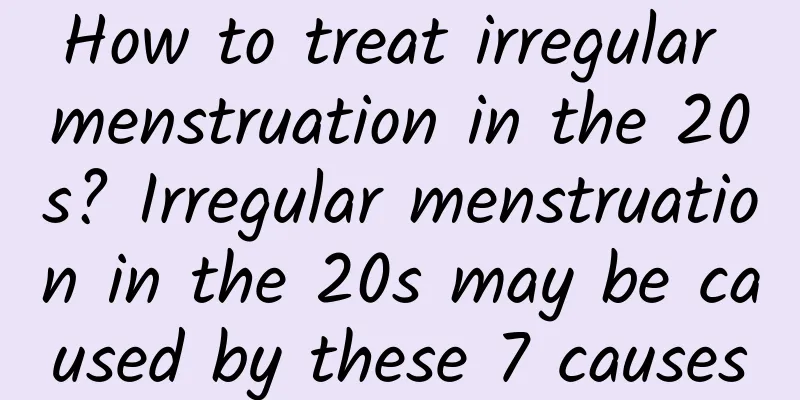What are the Western medical treatments for pelvic peritonitis?

|
I believe everyone is familiar with pelvic peritonitis. There are many patients with pelvic peritonitis around us in our lives. The occurrence of this disease has a certain impact on the physical health and life of these patients. The following will introduce in detail the treatments for pelvic peritonitis. 1. General treatment All patients should rest in bed and take a semi-recumbent position to facilitate the accumulation of exudate or pus in the pelvic cavity, thereby limiting the inflammation. Adequate nutrition and fluid infusion should be given, and electrolyte disorders and acid-base imbalances should be corrected. Physical cooling can be used when effective. Gastrointestinal decompression can be given for patients with severe abdominal distension. Unnecessary gynecological examinations should be reduced to avoid the spread of inflammation. 2. Antibiotic Treatment Patients with acute pelvic peritonitis should undergo bacterial culture of cervical secretions or posterior fornix puncture fluid, or blood culture and drug sensitivity test, and select effective antibiotics based on this. When the pathogen is unclear, gentamicin plus metronidazole can be used, which is effective against Escherichia coli and anaerobic bacteria. The specific usage is gentamicin 80,000 U, twice a day, intramuscular injection, 0.2% metronidazole 500 ml once a day, intravenous drip. You can also use 2.4 grams of Ansitrol, add liquid to intravenous drip, once a day, and take Ansitrol tablets 0375 in the evening to enhance the efficacy; in addition, vanguard mycin b, kelforon, erythromycin, fosfomycin sodium, etc. can all be used. When the results of bacterial culture and drug sensitivity test are detected, it should be decided whether to replace the antibiotic based on the results of drug sensitivity test and the efficacy of the first selected antibiotic. Generally, those with better efficacy can be replaced, but those with insignificant efficacy after 3 to 4 days of medication should be replaced in time. 3. Surgical treatment 1. Incision and drainage: When pelvic peritonitis causes abscess formation and the abscess has reached the pelvic floor, incision and drainage can be performed through the posterior fornix. However, since the abscess is located in the abdominal cavity, drainage can only temporarily relieve symptoms and often cannot cure the disease. 2. Laparotomy to remove the lesion: When a pelvic abscess forms and ruptures, laparotomy can be performed to remove the lesion while controlling the infection with large amounts of antibiotics. This is the most effective and rapid method. |
<<: Principles of treatment of pelvic peritonitis
>>: What are the treatments for pelvic peritonitis?
Recommend
How to eat at a convenience store? 10 good things for building muscle and reducing fat revealed
The most frightening thing during the fat loss pe...
Brief introduction to the various treatment methods for cervical hypertrophy
There are actually many treatments for cervical h...
How to treat pelvic inflammatory disease
How is pelvic inflammatory disease treated? 1. Me...
Can semen really prevent gynecological diseases? Gynecologist: Don’t be shy, the sooner you know, the sooner you will benefit.
Not long ago, a young lady named Xiaoling (pseudo...
What are the most important things to pay attention to in painless abortion?
Painless abortion is a common operation to termin...
What is the cause of the right ovarian cyst with pain? Is it dangerous if it is not treated?
What pain does a right ovarian cyst cause? Is it ...
Experts explain to you the relevant knowledge of Candida vaginitis
Candidal vaginitis is a gynecological disease cau...
Biopsy What are the symptoms of chronic cervicitis? There are four main symptoms of chronic cervicitis.
The symptoms of chronic cervicitis are diverse, t...
Symptoms of uterine fibroids can cause women to have severe lower abdominal pain.
As we all know, the symptoms of uterine fibroids ...
The most important factors causing pelvic inflammatory disease
Pelvic inflammatory disease is common in life. Kn...
What is the best medicine for pelvic inflammatory disease? Treatment according to severity
Patients with pelvic inflammatory disease can cho...
When checking for irregular menstruation, pay attention to your own endocrine problems
Organic diseases or dysfunction are the main caus...
Nursing experience of endometrial tuberculosis
Patients with endometrial tuberculosis often see ...
What foods are good for menopausal women?
Menopause is a transition period from the vigorou...
What causes diarrhea during ectopic pregnancy?
Ectopic pregnancy is ectopic pregnancy. Diarrhea ...









